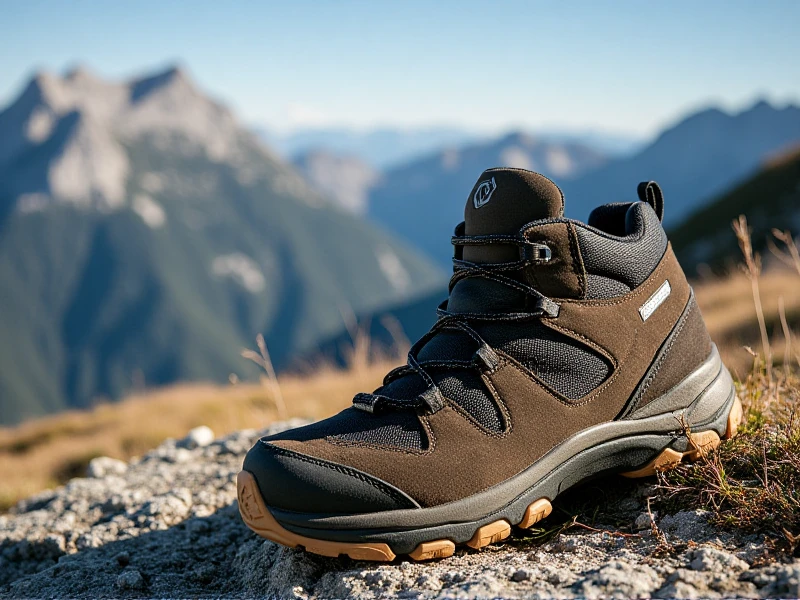Top Men's Hiking Shoes to Conquer Any Trail in 2024: Your Ultimate Buying Guide
2025-05-30

Here’s an SEO-optimized article targeting "men's hiking shoes", written for user engagement and search visibility:
Finding the right men's hiking shoes isn't just about comfort – it’s about safety, performance, and unlocking unforgettable adventures. Whether you're tackling rugged mountain paths, exploring forest trails, or enjoying weekend nature walks, your footwear is your foundation. With so many options, choosing the perfect pair can feel overwhelming. Let’s cut through the noise and explore what makes men's hiking shoes essential outdoor gear and how to pick your ideal match.
Why Investing in Quality Men's Hiking Shoes Matters
Hiking in worn-out sneakers or unsuitable footwear is a recipe for blisters, rolled ankles, or worse. Dedicated men's hiking shoes are engineered to protect and support you:
1. Superior Traction: Aggressive lugs and sticky rubber soles grip loose rocks, muddy slopes, and wet surfaces far better than regular shoes, preventing slips and falls.
2. Ankle & Foot Support: Reinforced midsoles, firm heel counters, and supportive footbeds stabilize your feet on uneven terrain, reducing fatigue and injury risk.
3. Weather & Element Protection: Waterproof membranes (like Gore-Tex®) seal out rain and stream crossings, while durable uppers fend off abrasion from rocks and roots.
4. Enhanced Durability: Built with rugged materials, quality hiking shoes for men withstand punishing trails far longer than everyday footwear, saving you money long-term.
5. Optimized Comfort: Strategically placed cushioning, breathable linings, and ergonomic designs keep your feet comfortable mile after mile.
Key Features to Consider When Buying Men's Hiking Shoes
When browsing men's hiking shoes, prioritize these critical elements:
Intended Use: Are you day-hiking on well-maintained trails (Hiking Shoes: lighter, lower cut) or carrying a heavy pack on multi-day treks (Hiking Boots: higher cut, stiffer, more support)? Match the shoe to your trail difficulty and pack weight.
Fit & Comfort: This is NON-NEGOTIABLE. Always try boots on later in the day with the socks you plan to hike in. Ensure snugness (no heel slippage), ample toe room (wiggle space), and no pressure points. Walk on an incline/decline if possible.
Waterproofing: Essential for wet climates or stream crossings. Gore-Tex® is the gold standard. For hot, dry trails prioritize breathable non-waterproof shoes.
Outsole & Traction: Look for aggressive, multi-directional lugs made of sticky, high-quality rubber like Vibram® Megagrip. Deeper lugs handle mud better.
Midsole & Support: EVA foam offers lightweight cushioning. PU foam provides more durability/support under heavy loads. A supportive shank adds stability on rocky terrain.
Upper Materials: Leather (durable, protective) vs. Synthetic Mesh/Nylon (lighter, faster drying, more breathable). Many offer a blend.
Weight: Lighter shoes increase speed and reduce fatigue on less technical trails, while heavier boots offer maximum protection/support for challenging hikes.
Top Contenders: Popular Men's Hiking Shoe Styles & Brands
Lightweight Trail Runners/Hikers: Example: Salomon X Ultra 4. Perfect for fastpacking, day hikes on moderate terrain. Extremely flexible, breathable, and quick-drying.
All-Mountain Hiking Shoes: Example: Merrell Moab 3. The quintessential versatile men's hiking shoe. Excellent balance of support, cushioning, traction, and durability. Many waterproof (Moab 3 Waterproof) and non-WP options.
Sturdy Mid-Weight Hikers: Example: Keen Targhee III. Known for wider toe boxes ("KEEN fit"), robust protection, and excellent waterproofing. Great for heavier loads or rough trails.
Waterproof Leather Boots: Example: Lowa Renegade GTX Mid. Offers classic boot support, unmatched durability, and premium waterproofing. Excellent for rocky, technical terrain or 4-season hiking (with appropriate insulation).
Budget-Friendly Durability: Example: Columbia Newton Ridge Plus. Provides solid features and waterproofing (Omni-Tech™) at an accessible price point for beginners.
Pro Tips for Getting the Perfect Fit and Longevity
1. Socks are Key: Wear quality merino wool or synthetic hiking socks. They wick moisture, cushion, and fit seamlessly with your shoe.
2. Break Them In: Never hit the trail in brand-new men's hiking shoes! Wear them around the house, then on short walks, gradually increasing distance.
3. Know Your Foot: Understand your arch type (flat, neutral, high) and if you need extra support (orthotics). Some shoes offer different insoles.
4. Lace Smart: Learn different lacing techniques to address heel slippage, pressure points, or top-of-foot pain.
5. Maintenance Matters: Clean off mud and debris after hikes. Allow shoes to air dry away from direct heat. Reapply waterproofing treatments (like Nikwax) periodically, especially for non-leather options.
6. Know When to Retire: Worn-down treads, compressed cushioning, cracked midsoles, or failing waterproofing mean it's time for a new pair. Don't compromise safety.
Your Journey Starts from the Ground Up
Choosing the best men's hiking shoes empowers you to explore farther, safer, and in greater comfort. It’s an investment rewarding you with blisters averted, confidence boosted, and trails conquered. Identify your hiking style, prioritize critical features like fit and traction, and choose footwear from a reputable brand matching your needs and budget.
Ready to trade the couch for the summit? The perfect trail awaits – make sure your men's hiking shoes are up to the adventure. Visit our curated collection to find your ideal match today!
Category: